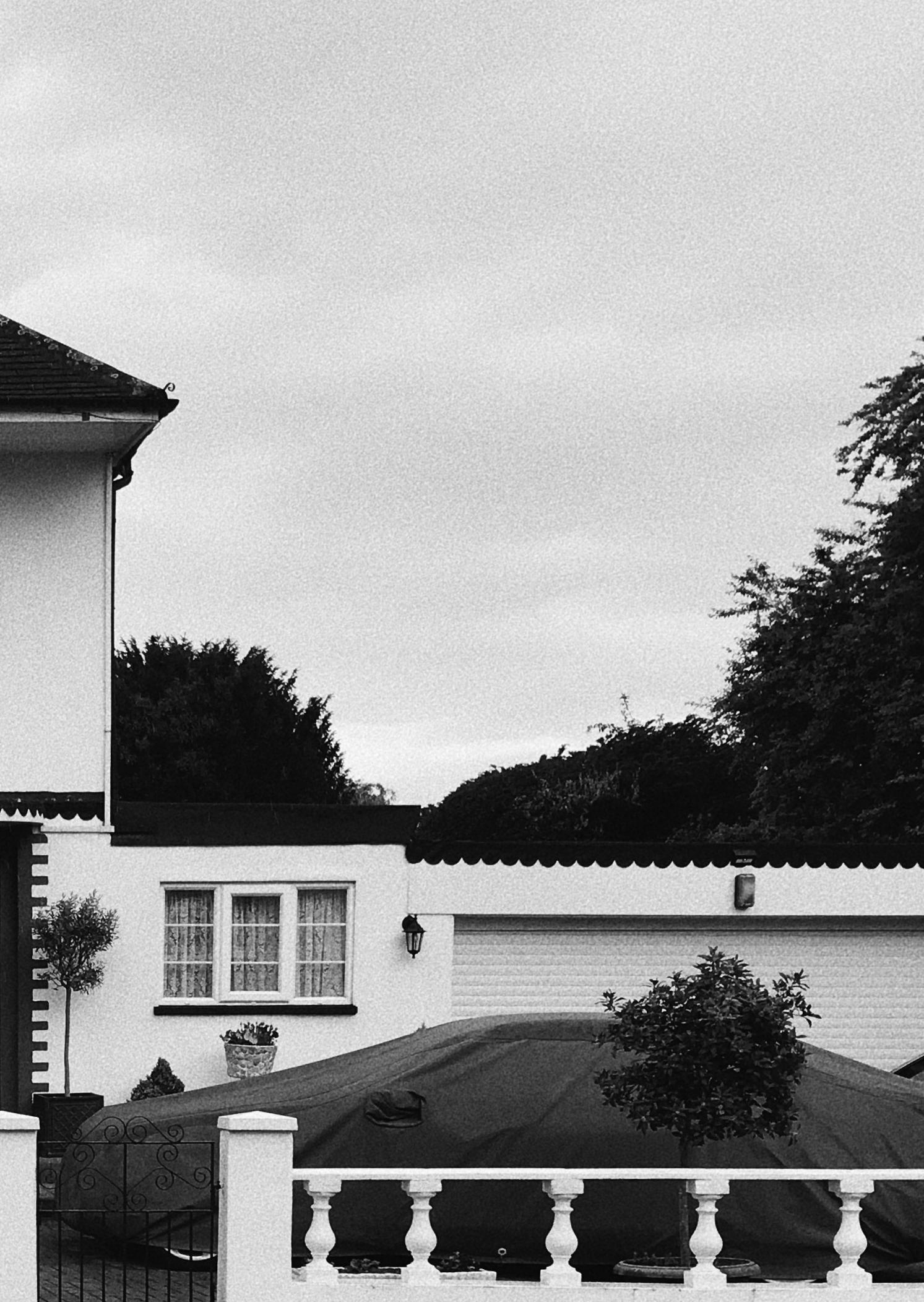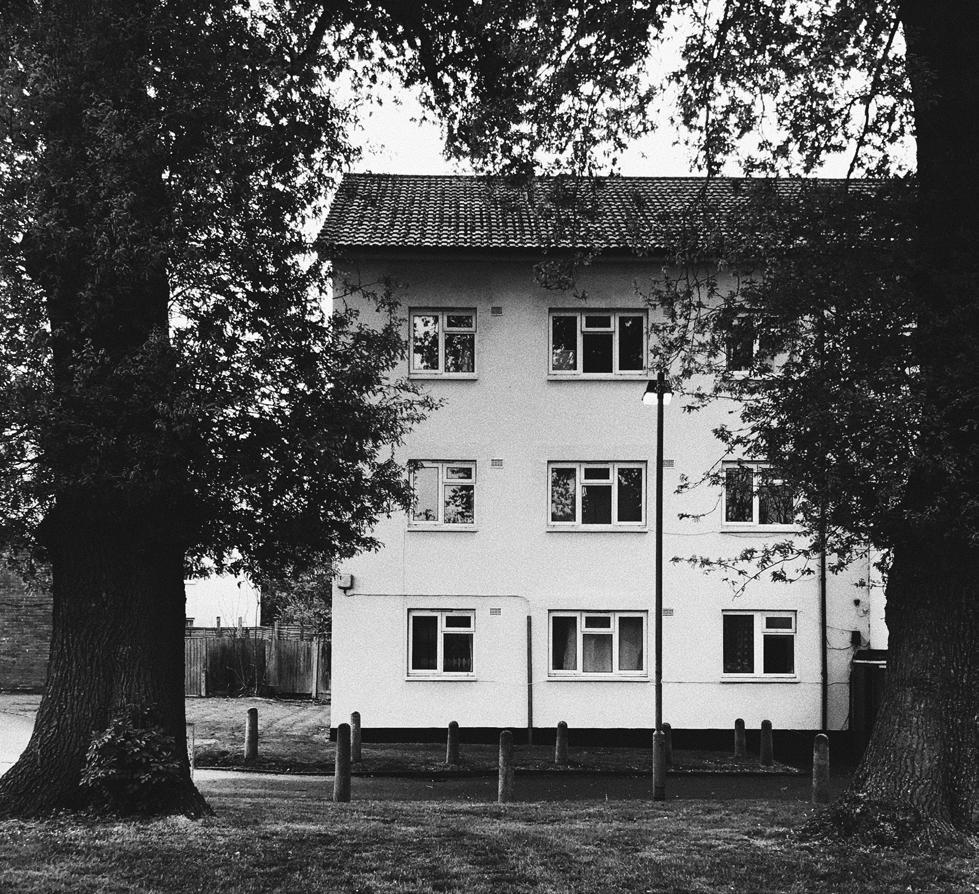
5 minute read
The freedoms of Suburbia
53/06 Home Pen Pal
Words & images Amy Young
Advertisement
Suburbia in London first established itself during the 19 th century. Inner city London was suffering from an overgrowth in population which developed into extreme overcrowding, forming what could only be described as city slums. This resulted in unpleasant living conditions, prompting many city people to crave a new way of life. The development of the national rail and the omnibus presented an opportunity for individuals to maintain their jobs in the centre of London whilst residing further outside the city. CFG Masterman in The condition of England described those who escaped the city as the suburbans, they formed a what he calls “a homogeneous civilisation – detached, self-centred, unostentatious. A life of security; a life of sedentary occupation; a life of respectability.”

After the second world war, suburbia began to expand at an unprecedented rate, cheap housing in its masses was being erected to compensate for what had been lost during the Blitz. It gave way to the cookie cut house, the modernised version of the traditional English cottage that is seen across the majority of the UK. The suburban dream also came to fruition; semi-detached houses allowed the suburbans to live in spacious and secluded homes but within the often-modest budget of the lower middle class. During the post-war period it seems that those living the suburban dream were content and fulfilled by the life the suburbs could offer them; the safety, community and predictability. Those living a ‘cultured’ city life however, thought otherwise, heavily criticising the very idea of suburbia. To them it was an emblem of social snobbery: a place full of wealth and devoid of taste. George Orwell famously said in a reflection of his novel Coming up for air, “suburbia is a prison with the cells all in a row, semi-detached torture chambers.”
After spending the first eighteen years of my life in the sleepy suburbs of south London, to me suburbia largely had the connotations Orwell described, I saw it as a place of homogeneity, complacency, ordinariness and the stiff middle class. I perceived suburbia as a place that stifled creativity and freedom, a completely mundane backdrop to life.
In March this year I moved back to my childhood

home in London, taking refuge with my parents from the relentless pandemic of covid-19. Suddenly, the unrestricted world I had been enjoying for the past three years had been condensed down to only a few streets I had seen thousands of times before. At first, the limitation on my surroundings was horrendous, I felt uninspired and numb. However, as the weeks went on I felt a change in my attitude, I found myself having to stop to take pictures of houses, people and scenes, documenting the suburbs like I would document a new city. Suburbia suddenly had a new lease of life, the quirks were unfolding, the architecture was speaking a clearer language and I could see the intricacies of the neighbourhood for the first time, without the clouded judgement I had previously been carrying.
The sudden absence of the feeling of monotony I think was in part due to my observation of the ‘addition architecture’ in suburbia. I would define ‘addition architecture’ as the ad hock extending and enlarging of a building, often without architectural guidance or any real appreciation for form and aesthetics. The alterations are, by and large, driven by the occupiers, moulding their homes to exactly their needs, whether that be an expanding family, need for a home office or an extra bathroom. The result of this ‘addition architecture’ is a strangely rich architectural language. Each home has character, a quirk, all of a sudden, the cookie cutter streets have diversity.

The ‘addition architecture’ has definitely not made suburbia more beautiful, far from it I would argue. It has simply given it some substance. In the infamous form versus function debate, it seems in the suburbs function always prevails. Space is created, even if that results in triangular dormers or protruding side extensions that ignore the laws of symmetry. ‘Addition architecture’ does not care for style or theories, what is added is added by necessity. Each addition made by each household is subtly different, just like each household has its subtilties. Maybe the roof pitch is an extra two degrees after the extension or a new bay window has been added on the side elevation unlike the rest of the street. The suburbs have slowly evolved from being homogenous, neighbourhoods to places with differences and character, a quality which for a long time was said to be missing. One could argue that this is simply the working of time, places naturally evolve and change as the years pass. However, the suburban dream also plays a part. The suburbs are the place where the middle class can carve a little piece of England out for themselves, the additions they make to their homes become a mark of ownership and pride.
The ‘addition architecture’ I saw also emphasised the surprising longevity of the suburbs. One of the biggest critiques of post-war suburbia is that the neighbourhoods were built for a vision of the future that was mostly unfixed. How could the architecture respond to such uncertainty? The answer to this

seems to be that the houses designed were adaptable, the base model was not the house of the future, but it had the capability to transform into it when need be. The large pitches of the roofs gave way to spacious attics which could very easily be transformed into a fourth bedroom as a family expanded, or the rear could be extended four meters when the household decided the children were getting a bit too big for the modest living room. Suburbia unlike other typologies allows for life to dictate the architecture in quite a natural way, the buildings are morphed and formed around those inhabiting it.
For much of recent history the suburbs have been attacked and criticized as if they are places of atrocities and architectural suicide. Spending my quarantine getting to know suburbia a bit more personally has truly shifted my perception and judgements. Suburbia is no longer a place that is stifled and a prison for the middle class, but surprisingly a place for an exploration of identity, self-driven architecture and place of true longevity.
Amy is an editor at Bath University's magazine Paperspace, the student-led architectural magazine from the Department of Architecture. She wrote this article during an exchange semester at BK.









